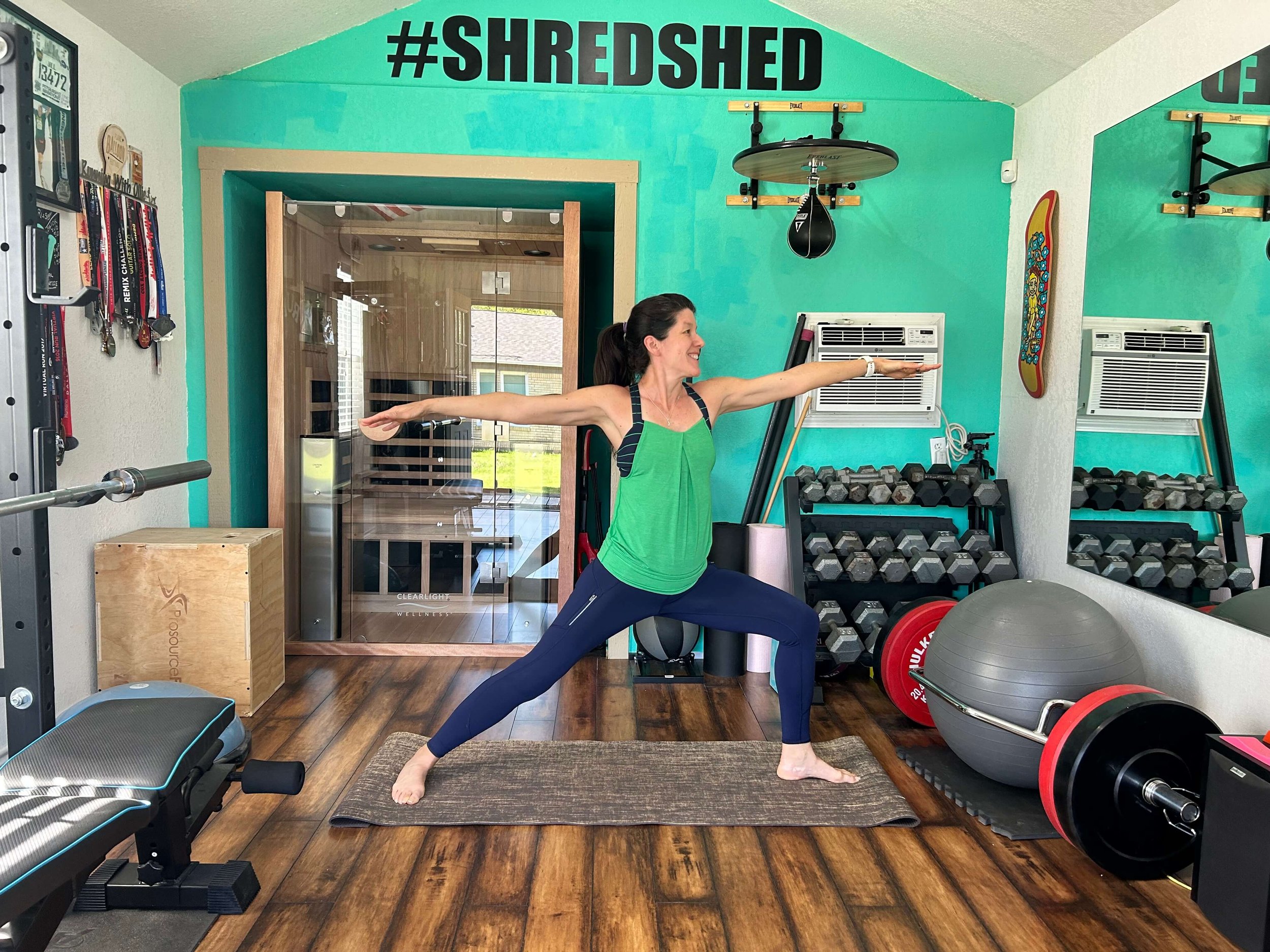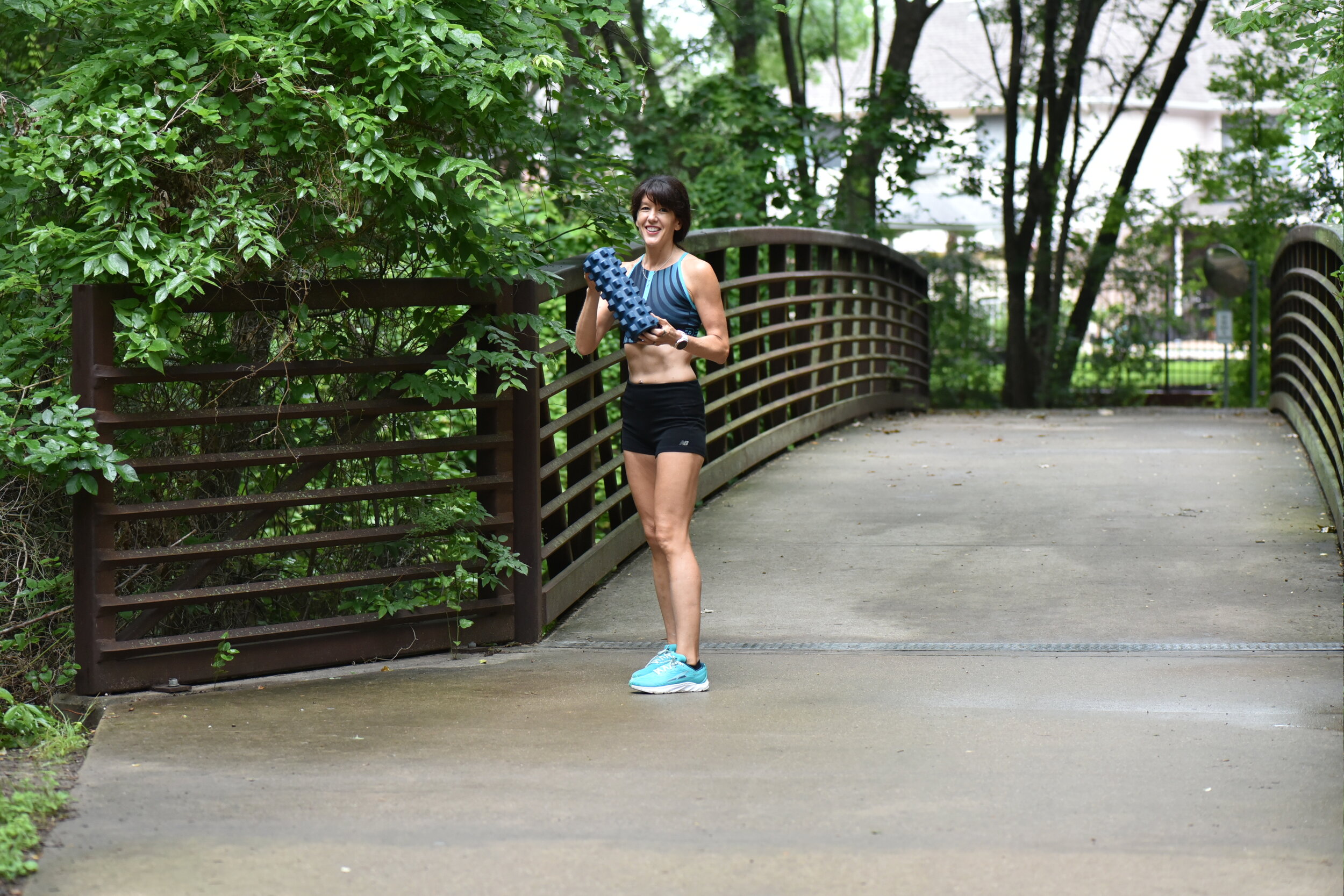As a running coach and a personal trainer I understand that it can be challenging for runners to find the time to do their (needed!) strength training. You want to run more in order to improve in running. You're afraid if you do lower body strength training that you'll be sore and it will hurt your future runs. Not to mention, when do you find the time to squeeze it all in?
I developed this track speed and strength interval workout so that you can do your running workout and leg strength workout on the same day! It should about an hour to complete and you'll be stronger for it. It may make you temporarily sore, especially if you are not used to strength training, but in the long run you'll be stronger, faster and less prone to injury. What's not to love about that?
Speed and Strength Track Workout
Warm up by jogging two times around the track, which is 800 meters or a 1/2 mile.
WALKING LUNGES
Perform 12 walking lunges on each leg on the straight of the track. Be sure if there are other people or runners on the track that you yield to them and always stay on the farthest inside lane (aka out of the way). Once you complete 12 walking lunges on each leg jog the rest of the way around the track at a conversational pace.
With your feet hip width apart and your toes pointed straight ahead, hold your core stable and your back straight. Take one large step to lunge forward until your front knee is lined up over your ankle and your back knee is nearly touching the track. Do not allow your knee to go forward past your toes. Once you are in the lunge position push back up to standing with your back leg. Repeat with other leg. While in the low position resist the urge to lean forward or rest your arms on your thighs.
SQUATS
Perform 12 squats and then jog the rest of the way around the track at a conversational pace.
Starting with your feet hip width apart push your hips back and then lower your body by bending your knees until your thighs are parallel to the floor or as low as your flexibility will allow. In the low position, engage your core, squeeze your glutes and push up to standing.
STAIR REPEATS
Run up and jog or walk down the stadium stairs. Run up the stairs as quickly as you can, swinging your arms as you go. Repeat five times, then jog one time around the track.
SIDE SQUAT UP STAIRS
Side squat up 12-15 steps. Face the other direction to work the other leg and side squat 12-15 steps. Jog or walk back down the stairs and jog one time around the track.
Stand sideways on the bottom step. With your back straight, push your hips back and bend your knees to lower into a squat position. Using your leading leg, step up to the next highest stair. Follow with your back leg. Try to stay in the low position as you work up in 12-15 steps.
Face the other direction to work the other leg and repeat on other side for 12-15 steps.
RUN!
Run fast for one lap around the track. You should be working hard and breathing heavily for this lap. You get to rest after this, so give it all you have!
Walk one lap around the track to recover.
That's 1.25 miles work + your warm up and cool down = 2 miles. Beginners, you're done! Good job.
Intermediate to advanced runners: Rest and repeat 1 or two more times or until an hour is up.
It is important to remember that while I am running coach and personal trainer, I am not your running coach and personal trainer. Please speak to your doctor before beginning any new exercise program and/or work with a fitness professional who knows your unique abilities and goals.
I'd love if you would give this speed and strength track workout a try and let me know what you think!
Like this post? Please consider sharing.



































When we “fall back” at the end of Daylight Saving Time, most people think about gaining an extra hour of sleep. Years ago, I wrote about using that hour to restart morning workouts. Now, I see this moment even more clearly. The time change is more than a bonus hour. It creates a natural opening to reset habits, experiment with morning movement, and rethink the stories we tell ourselves like “I’m not a morning person.” Whether you use the extra hour to move your body or catch up on sleep, this season is a chance to rebuild your morning routine in a way that fits your life.